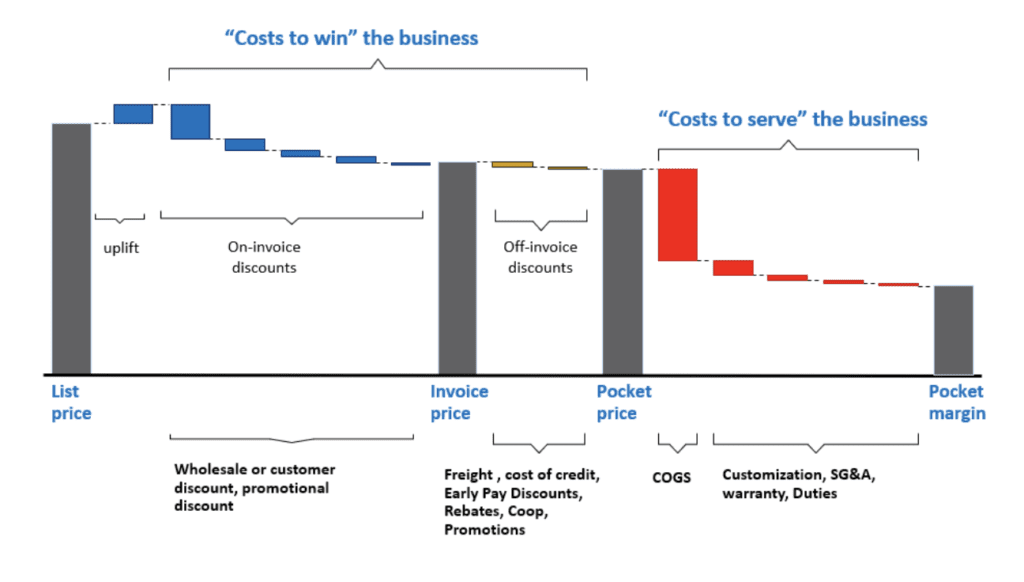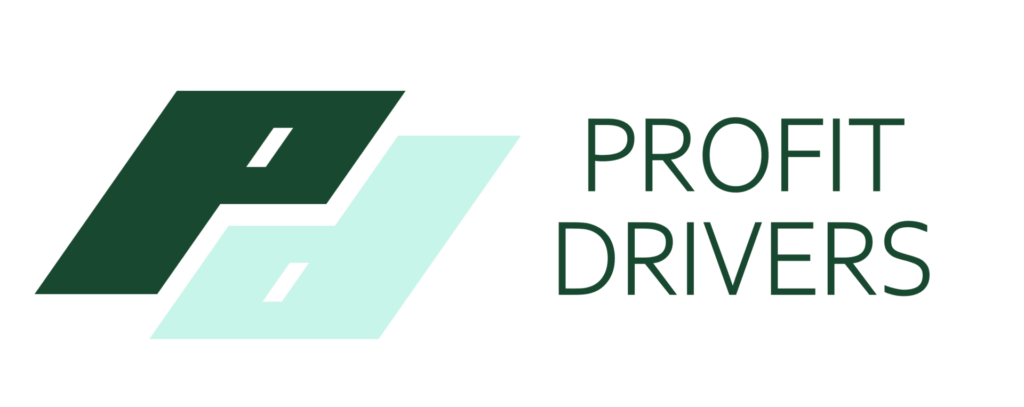From Gross to Net: How to Identify Margin Leakage
Gross-to-Net (or GTN) is the difference between your gross sales and net sales, and it includes both on-invoice and off-invoice discounts, such as rebates or promotions. A 1% improvement in price can lead to an 11% increase in profitability, so analyzing and ensuring the value of each discount is important. A common method for managing GTN is leveraging a price waterfall to identify margin leakage at every step of your pricing.
What is a price waterfall?
A price waterfall is a pictorial view of each component of your price and margin. Below is a generic view of what your price waterfall may look like.

Looking at your pricing waterfall can help you understand which customers, channels, and products are most and least profitable; whether your rebates and promotions are effective; or if you are giving too much away.
Generating the waterfall
The best practice is to ensure that you can access your data on a single platform so that you can actively manage every component of your pricing. There can be significant complexity in doing this, especially regarding off-invoice discounts. On-invoice discounts can be generated from the invoicing system, but off-invoice discounts may not be stored in an easily accessible format. For example, rebates may be calculated in Excel by one person, with the data only accessible on a hard drive or shared folder.
Depending on the complexity of your business, you may be able to feed data into a single dashboard system; or, if you have complex rebates, promotions, and discounts, a fully integrated SaaS system may be your best solution. Numerous options exist in the market, so you can select the one that works best for your business.
Benefits of an integrated system
Data visibility presents numerous opportunities to prevent margin leakage. Imagine a scenario in which a new customer asks for a 7% discount off your list price. If your team can see that the customer is also eligible for a 2% rebate, they can provide a 5% discount to achieve the target price. Without the benefit of visibility to all incentives and discounts, the customer would have received a 9% discount!
Siloed systems and processes often create other opportunities for margin leakage. For example, a customer may claim a rebate or other incentive that has expired or to which they are not entitled. Having an integrated system will allow you to connect your sales data to your incentive programs and avoid paying incentives not due.
Other tools to identify margin leakage
Having your data in one place will allow you to create other dashboards to identify and correct profitability leakage. Margin hierarchies, where products are categorized into “Grow”, “Hold”, and “Shrink” based on their margin rates, can show you which products you should focus on selling, which should be evaluated for cost actions, or even removed from your portfolio. Another useful tool is the scatter plot, which will allow you to easily identify customers or products with low profitability that need your attention.
Managing Incentives
Discounts, promotions, and rebates should align with the value you bring to a customer and the behavior you want to encourage; these should encourage growth as well as additional profitability. For example, your rebate structure could utilize a combination of volume rebates, mix rebates, or growth rebates. A volume rebate will prevent customers from promising to buy a certain amount but not executing on their promise. A mix rebate should encourage your customers to buy higher-profit products and improve your product mix. Growth rebates are designed to encourage growth of a certain product or incremental year-over-year purchasing. You should set these targets in the context of the total market; otherwise, you may find a customer meeting their growth rebate tier while you lose market share.
Utilize your data to evaluate whether a promotion was successful. Depending on your goals, you should determine if you gained new customers (and if they continue to purchase from you), received more orders of the promoted items, or increased sales of non-promotional products that are bought in conjunction with the promoted product.
Final thoughts
Remember that managing gross-to-net is a continuous process of setting your prices and discounts, analyzing the results, and optimizing your pricing. Having real-time visibility into your net sales to identify margin leakage and improvement opportunities will result in increased profitability and aid the creation of a holistic pricing strategy.


